DarkSkySeeker
Aug 05, 2018Explorer
Battery/Inverter Box
My Girlfriend and I camp in our Forest River Wildwood and do Astrophotography in dark/remote locations.
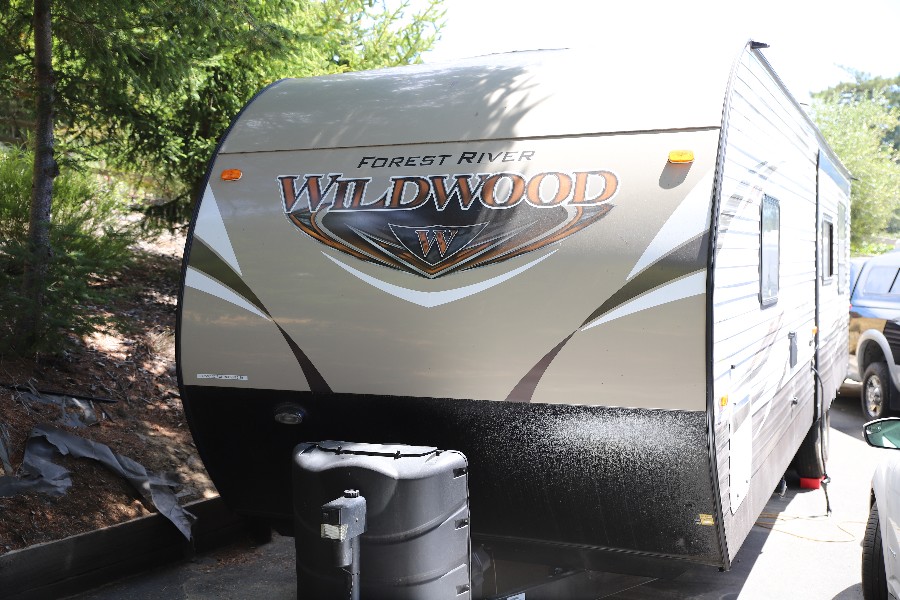


We use laptops, motor controllers, camera batteries, and other subdued lighting to get the job done and spend a lot of time charging our equipment back up during the day. I much prefer solar panels over the Honda generator. And since we are up to midnight or later, the generator is not OK for late night use anyway.
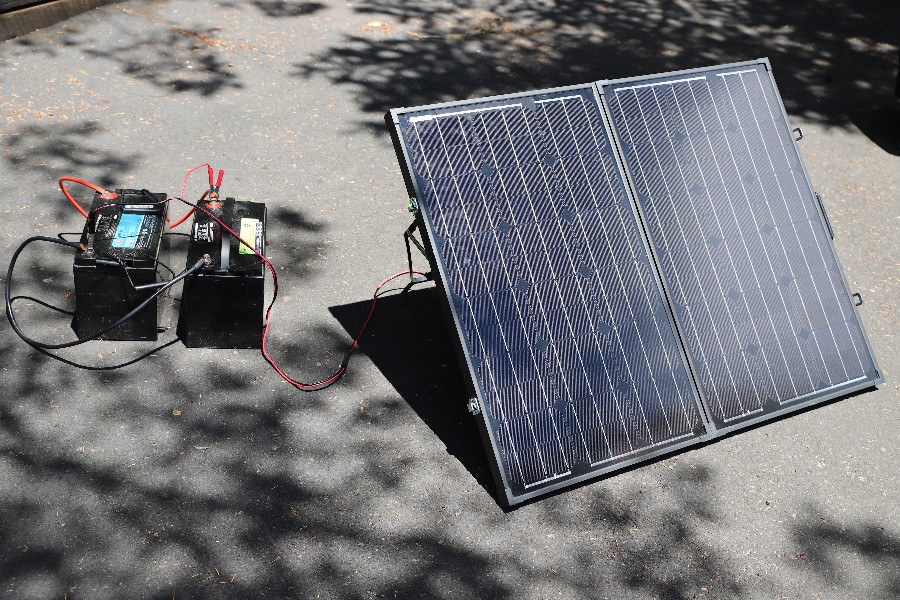
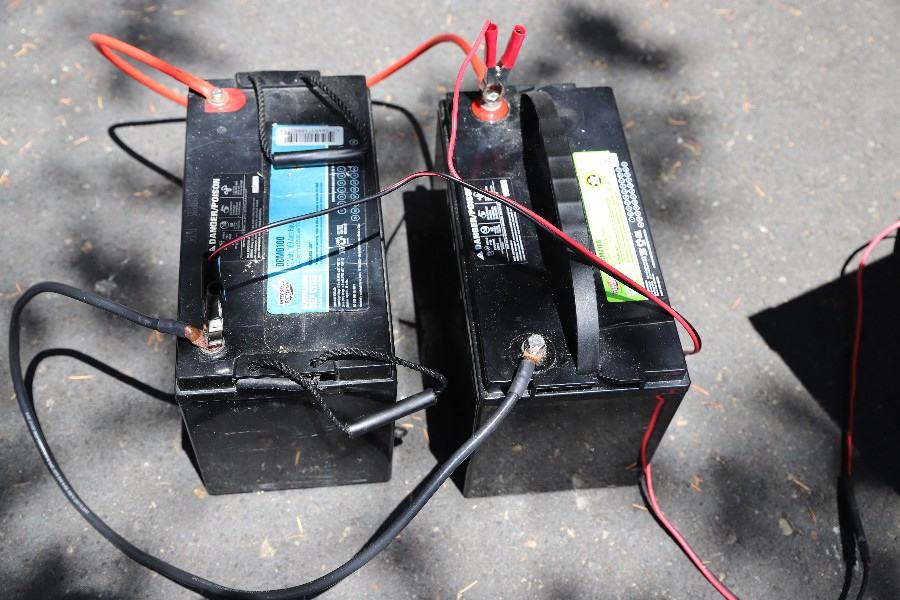
Alligator clips and cigarette lighter adapters don't cut it. Stuff can get bumped in the dark and connections get lost. We've used some cheap-o inverters from the auto parts stores, but have gone through half a dozen of those even though I am sure we did not exceed the output wattage.
So I decided to build a box that would hold batteries, an inverter, and other accessories to make the job easier.
Also the two times that our CO detector went off during the night for low battery was enough motivation to create this box.
It is made of pine and stained to look a little bit like oak.
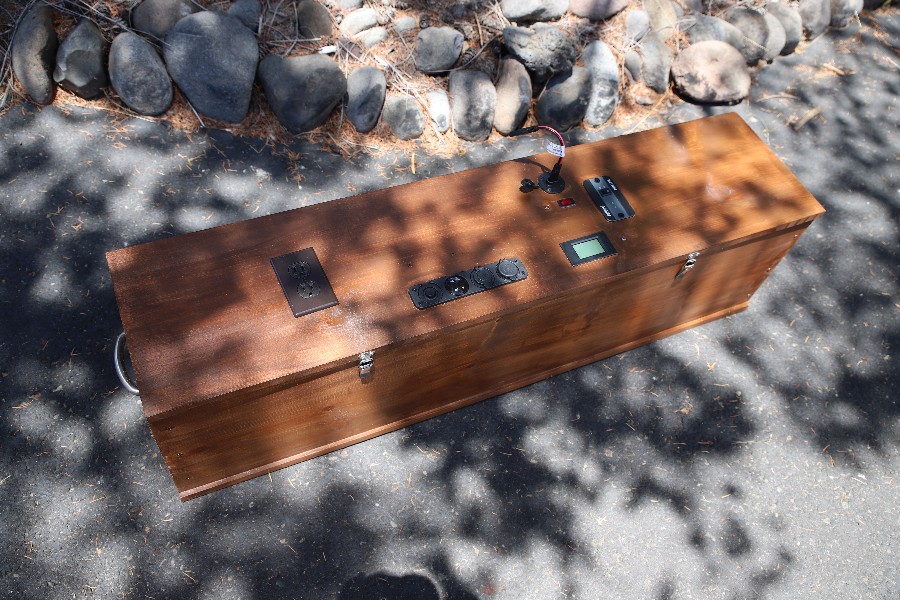
The lid has an array of options. To the left in this photo is a switchable voltage display, cigarette lighter adapter and 2 USB charging outlets.
At the top is the solar panel adapter for my coach so I can charge it if needed. To the far right is a switch to turn on and off the inverter remotely without opening the box.
To the bottom right is an power meter that reads voltage, amps, watts, and watt hours. This is really handy. Rather than operate blindly without knowing how much power I've used, this panel gives me a lot of information.
There are also a couple of indicator lights.
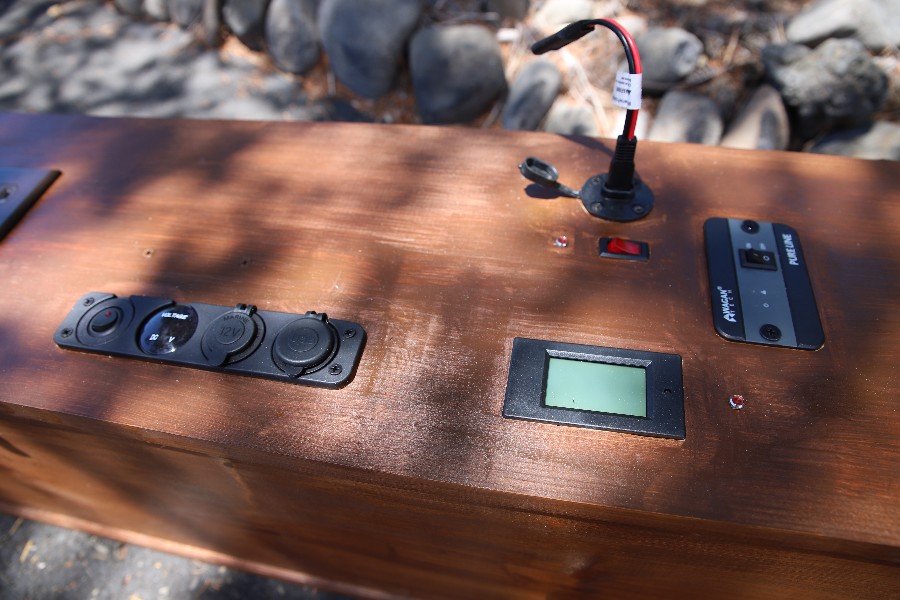
Rather than run extension cords out through the lid of the box, I put an AC receptacle in the lid.
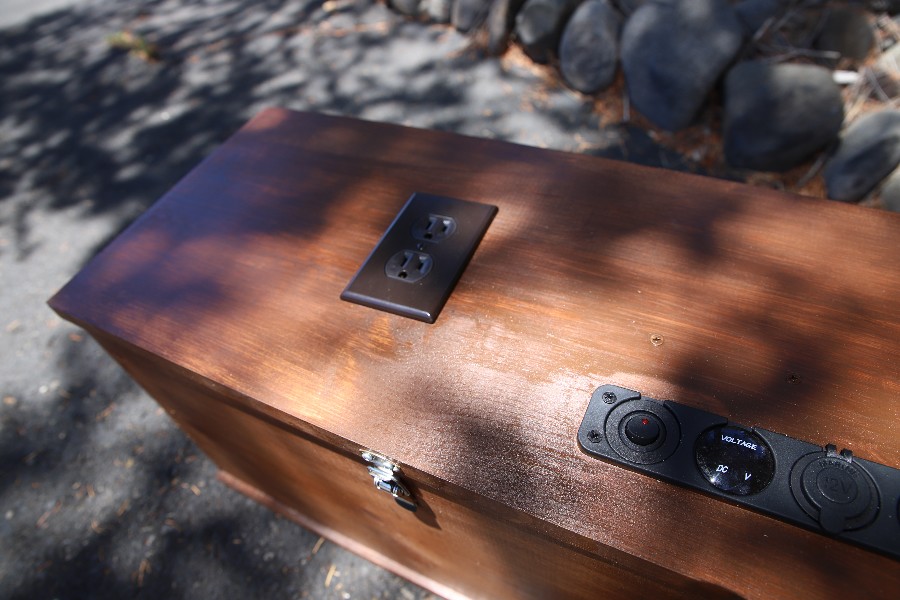
It is a heavy beast - its worst attribute. These handles are nice for carrying when the batteries are removed. I hoist the thing up onto my truck tailgate and install the batteries and then slide the whole thing into the truck when in use.
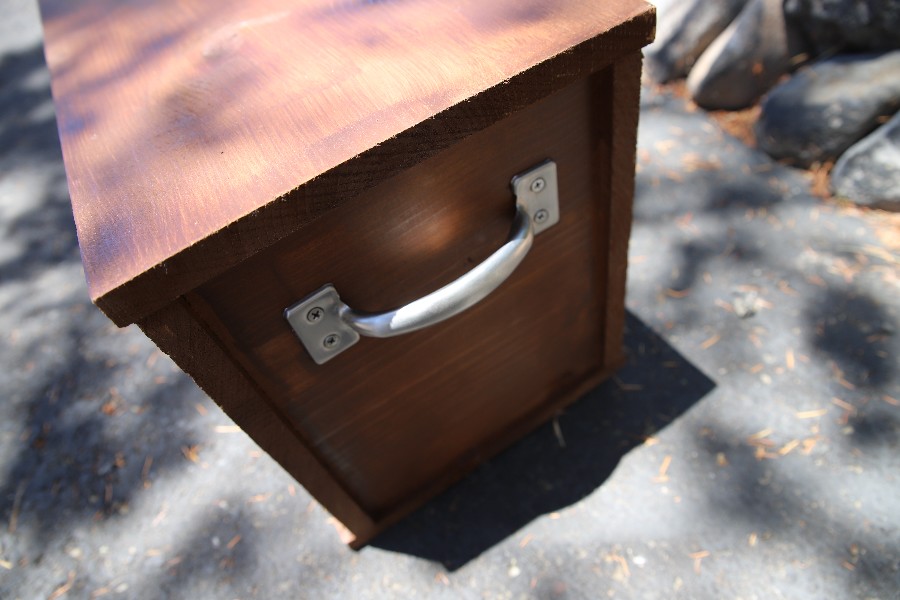
These arms keep the lid from over-extending.
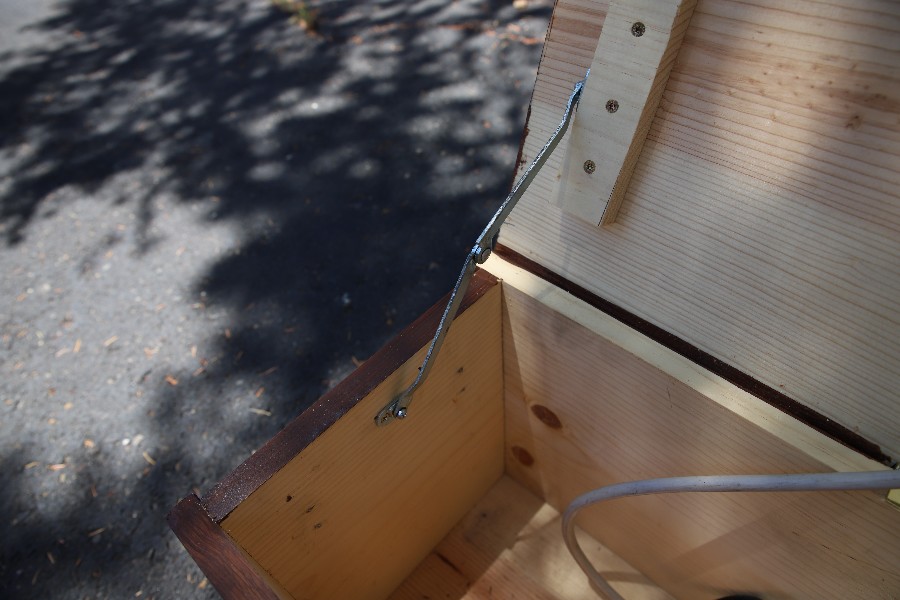
Inside, there a Battery #1 / Battery #2 / All switch. Reminds me of the engine controls on my Dad's sailboat. The buss bar routes power to the various elements on the lid.
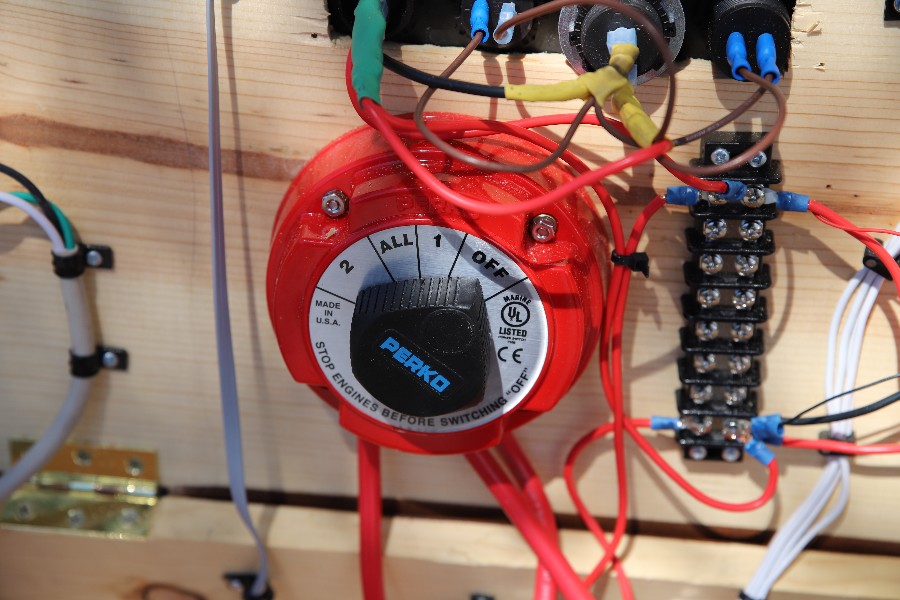
You can barely see in this photo one of the two circuit breakers. A 100 amp breaker exists for the connection to the inverter. I have a 30 amp breaker for the other accessories.
The void to the upper left in the photo is for the battery. There is another spot for the second battery not shown in the photo. These are Interstate DCM0100 deep cycle marine 100 amp hour units.
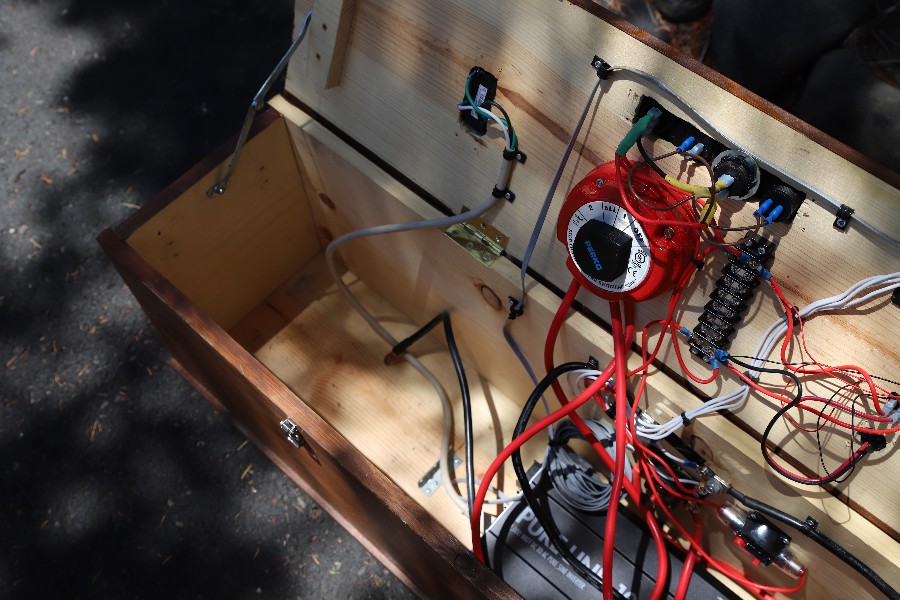
I chose to use a WAGAN inverter. Compared to the retail store inverters it seems really solid.
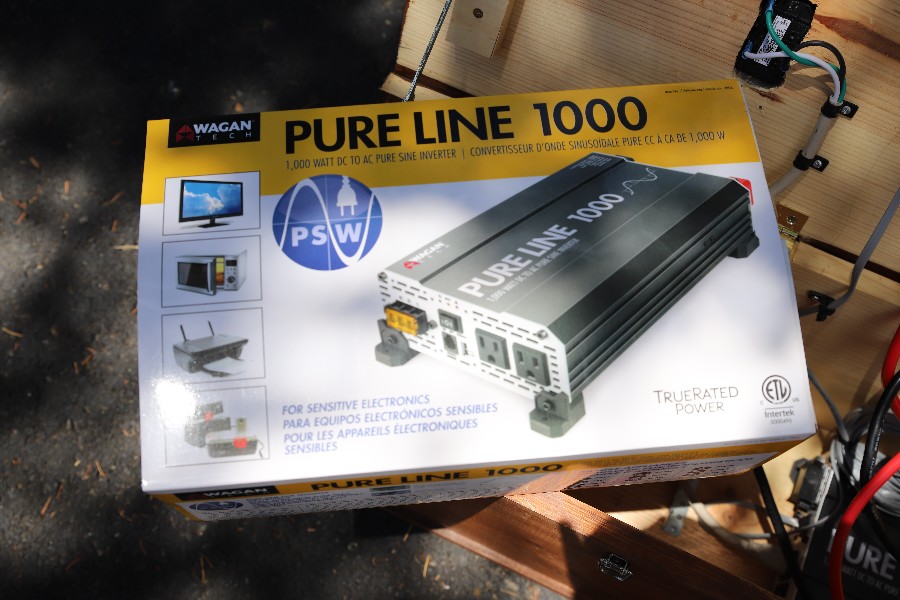



We use laptops, motor controllers, camera batteries, and other subdued lighting to get the job done and spend a lot of time charging our equipment back up during the day. I much prefer solar panels over the Honda generator. And since we are up to midnight or later, the generator is not OK for late night use anyway.


Alligator clips and cigarette lighter adapters don't cut it. Stuff can get bumped in the dark and connections get lost. We've used some cheap-o inverters from the auto parts stores, but have gone through half a dozen of those even though I am sure we did not exceed the output wattage.
So I decided to build a box that would hold batteries, an inverter, and other accessories to make the job easier.
Also the two times that our CO detector went off during the night for low battery was enough motivation to create this box.
It is made of pine and stained to look a little bit like oak.

The lid has an array of options. To the left in this photo is a switchable voltage display, cigarette lighter adapter and 2 USB charging outlets.
At the top is the solar panel adapter for my coach so I can charge it if needed. To the far right is a switch to turn on and off the inverter remotely without opening the box.
To the bottom right is an power meter that reads voltage, amps, watts, and watt hours. This is really handy. Rather than operate blindly without knowing how much power I've used, this panel gives me a lot of information.
There are also a couple of indicator lights.

Rather than run extension cords out through the lid of the box, I put an AC receptacle in the lid.

It is a heavy beast - its worst attribute. These handles are nice for carrying when the batteries are removed. I hoist the thing up onto my truck tailgate and install the batteries and then slide the whole thing into the truck when in use.

These arms keep the lid from over-extending.

Inside, there a Battery #1 / Battery #2 / All switch. Reminds me of the engine controls on my Dad's sailboat. The buss bar routes power to the various elements on the lid.

You can barely see in this photo one of the two circuit breakers. A 100 amp breaker exists for the connection to the inverter. I have a 30 amp breaker for the other accessories.
The void to the upper left in the photo is for the battery. There is another spot for the second battery not shown in the photo. These are Interstate DCM0100 deep cycle marine 100 amp hour units.

I chose to use a WAGAN inverter. Compared to the retail store inverters it seems really solid.
